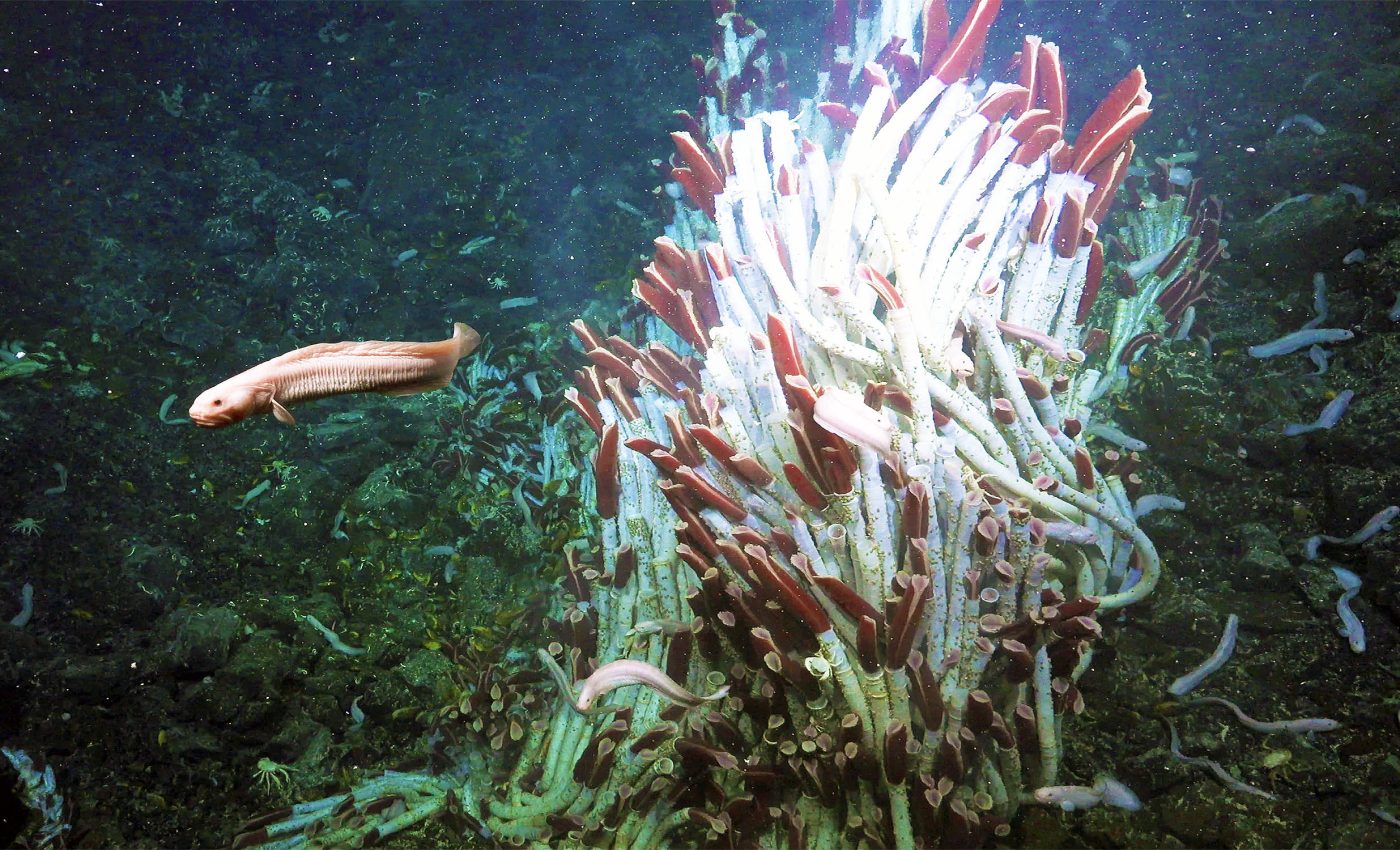
Strange creatures found living under the seafloor near hydrothermal vents
An incredible adventure under the volcanic ridges off South America has led to an amazing discovery. A variety of creatures, from tiny worms and snails to giant tubeworms and even more surprising life forms, are thriving in the dark waters of hydrothermal vents.
Life beneath hydrothermal vents
Hydrothermal vents, the source of these hot springs, have long been the subject of research and study.
These underwater chimneys of heat and energy are hubs of activity, attracting a wide variety of fauna that thrives in their immediate vicinity.
It was largely thought that the only life forms that could survive beneath these vents would be microbes and viruses.
However, our understanding of these habitats took an about-turn when a curious underwater robot, in the summer of last year, disturbed volcanic slabs to reveal a surprisingly diverse ecosystem beneath.
“This was totally unexpected,” said study co-author Sabine Gollner with the Royal Netherlands Institute for Sea Research.
Unseen ecosystem
Researchers propose that young creatures from the surface could be utilizing these vents for travel, eventually settling in the depths, creating a dynamic and interconnected ecosystem.
Future exploration will hopefully shed more light on whether similar colonies of animal life exist beneath other hydrothermal vents across the globe.
“This is an initial discovery that’s really promising,” said Jason Sylvan, a microbiologist at Texas A&M University who was not involved with the research.
Life clusters around hydrothermal vents
The expedition lasted 30 days and took place on the research vessel “Falkor (too)” from the Schmidt Ocean Institute.
The team set out on an incredible adventure to explore an undersea volcano that’s part of the East Pacific Rise, just off the coast of Central America.
This volcanic ridge, a product of the meeting of tectonic plates on the Pacific seabed, is peppered with hydrothermal vents.
A variety of unique sea life clusters around these vents, known to spew out elements essential for their survival at such extreme depths.
Many of these areas beneath the vents, however, have remained largely unexplored until now.
Life under rocks
Using a remotely operated vehicle, SuBastian, the researchers were able to flip over portions of the seafloor, revealing caves connected to the hydrothermal vents.
These caves were teeming with life, including giant tube worms and other fascinating creatures.
The discovery suggests a strong connection and interaction between the ecosystems of the seafloor and its underworld, allowing for the possibility of life thriving in unexpected places beneath the ocean floor.
“Underworld” of the seafloor
Hydrothermal vents have been an area of interest for scientists for the past 50 years, with unique ecosystems developing around these heat sources.
It has been observed that shifting tectonic plates give rise to new hydrothermal vents over time, and certain foundational seafloor animals like tube worms have been known to colonize these new vents within a few years.
New perspective on Earth’s lifeforms
This discovery provides a new perspective on deep-sea hydrothermal vents and their endemic animal life.
It suggests a symbiotic relationship between the vent animals above and below the surface, reliant on the vent fluid from beneath and oxygen in the seawater from above.
The discovery of life in this previously unknown sub-habitat suggests that the ocean depths and its floor may host many more organisms than documented earlier.
Next steps in hydrothermal life studies
Going forward, the team is keen on investigating the possibility of life beneath all deep-sea hydrothermal vents and exploring the extent of these underground caves.
However, extreme care must be taken when studying these delicate ecosystems. The researchers are conscious of minimizing disturbance, with the recent study only involving the lifting of six small squares of the seafloor, each measuring about 20 by 20 inches.
There is concern that any major disruption, such as large-scale drilling or deep-sea mining, could potentially alter the course of the hydrothermal vents and disrupt the connected ecosystems, posing a threat to the life forms dwelling there.
Why life under hydrothermal vents is important
Hydrothermal vent ecosystems are fascinating and hold important lessons for both marine biology and the search for life beyond Earth.
These vibrant communities thrive in extreme conditions that seem unwelcoming, pushing us to rethink what we know about where life can survive.
One of the coolest aspects is how these habitats rely on chemosynthesis instead of photosynthesis, using chemical energy from minerals released by the vents.
This unique survival strategy not only captivates marine ecologists but also sparks our imagination about the possibility of life on other planets, where sunlight might be hard to come by, but chemical energy could be plentiful.
This research not only sheds light on the mysterious underworld of the ocean but also highlights the importance of attentive and responsible exploration. It is a testimony to the fact that there is still much to be learned about our planet, often in the places we least expect.
The study is published in the journal Nature Communications.
—–
Like what you read? Subscribe to our newsletter for engaging articles, exclusive content, and the latest updates.
Check us out on EarthSnap, a free app brought to you by Eric Ralls and Earth.com.
—–













